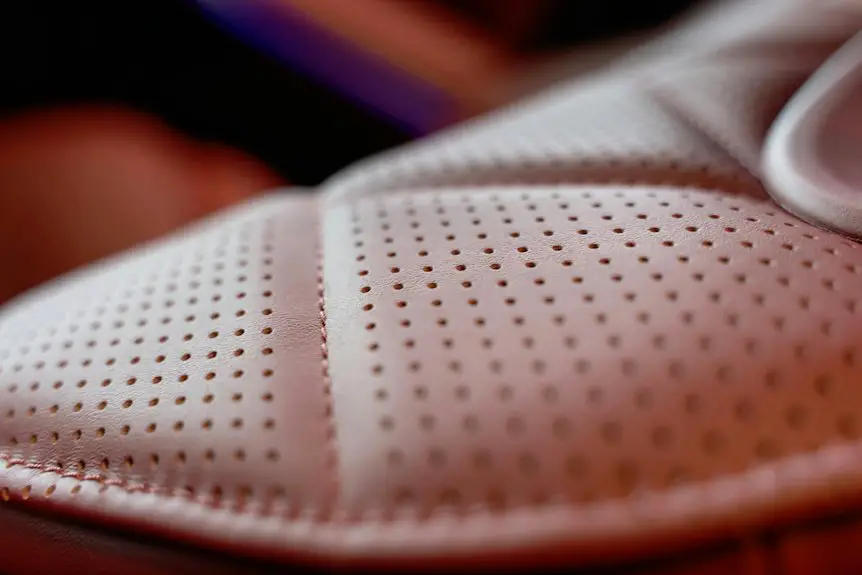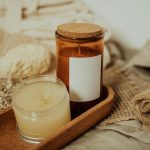When you’re choosing upholstery for a home bustling with pets and kids, durability isn’t just a bonus—it’s a requirement. You want fabric that stands up to scratches, spills, and constant use without losing its look or feel. But what exactly makes a fabric tough enough for this kind of wear? It’s more than just strong fibers; the weave, fiber type, and treatments all play an essential role in how well your upholstery holds up over time.
Table of Contents
Key Takeaways
- Durable upholstery fabrics have tight weaves and strong fibers to withstand wear, pilling, and abrasion over time.
- Synthetic fibers like nylon, olefin, and polyester offer superior stain resistance and durability for homes with pets and children.
- Natural fibers such as cotton, wool, and hemp provide breathability and resilience, enhancing fabric strength and comfort.
- Fabric treatments including stain-resistant and water-repellent coatings significantly extend upholstery lifespan in busy environments.
- Choosing fabrics with tight weaves and textures that hide wear and resist dirt ensures easier cleaning and lasting appearance.
Key Characteristics of Durable Upholstery Fabrics
Durability in upholstery fabric means it can withstand daily wear and tear without losing its look or strength. When choosing a fabric, you want one with high fabric longevity, which depends on tight weaving and strong fibers.
These fabrics resist pilling, fading, and abrasion, ensuring your furniture stays fresh longer. Look for fabrics with a high double rub count—a measure of durability that signals how well the fabric holds up under friction.
Additionally, ease of upholstery care plays an important role; durable fabrics should resist stains and be easy to clean without damaging the material.
Best Synthetic Fibers for Pet- and Kid-Friendly Upholstery
When choosing upholstery that stands up to pets and kids, synthetic fibers offer unbeatable durability.
You’ll find nylon excels in wear resistance, olefin resists stains like a champ, and polyester makes cleaning a breeze.
Let’s explore how these materials can keep your furniture looking great longer.
Nylon’s Wear Resistance
Nylon stands out as one of the top synthetic fibers you can choose for pet- and kid-friendly upholstery because it resists wear better than most alternatives.
Its exceptional nylon durability means it handles constant friction, scratches, and general rough use without showing damage quickly. You’ll find nylon applications everywhere—from heavy-duty furniture to active household environments—because it maintains its strength and appearance over time.
When you pick nylon upholstery, you’re investing in fabric that won’t easily tear or pill, making it ideal for homes with pets and children. Plus, nylon’s resilience lets you clean it regularly without compromising the fabric’s integrity.
Choosing nylon means you get upholstery that stays looking fresh longer, even under the stress of daily life with kids and pets.
Olefin’s Stain Defense
Although pet accidents and spills happen, olefin’s stain resistance helps keep your upholstery looking clean and fresh. You’ll appreciate olefin benefits like its ability to repel stains and resist moisture, making cleanup easier and faster. This fiber’s natural stain resistance means you can relax knowing your furniture stays attractive even with kids and pets around. Plus, olefin is durable and colorfast, standing up to everyday wear without fading.
| Feature | Olefin Benefits | Why It Matters |
|---|---|---|
| Stain Resistance | Repels liquids and stains | Easier cleanup |
| Moisture Resistance | Resists water absorption | Prevents mold and mildew |
| Durability | Strong and abrasion-resistant | Long-lasting upholstery |
| Colorfastness | Maintains color under sunlight | Keeps fabric looking new |
| Softness | Comfortable to touch | Pet- and kid-friendly comfort |
Polyester’s Easy Maintenance
Since polyester resists stains and dries quickly, you’ll find it incredibly easy to maintain in busy households.
Whether you choose pure polyester or polyester blends, this fabric stands up well to daily wear and tear from pets and kids.
To keep your upholstery looking fresh, focus on regular vacuuming and prompt spot cleaning. Use mild detergents and avoid harsh chemicals that can damage the fibers.
For tougher stains, gently blot instead of rubbing to prevent fiber damage.
Polyester’s durability also means it won’t fade easily, maintaining its vibrant look over time.
Natural Fibers and Their Role in Durable Upholstery
Natural fibers like cotton, linen, wool, and hemp have long been valued for their strength and breathability in upholstery.
When you choose upholstery made from these materials, you tap into their natural resilience and comfort. Cotton durability makes it a popular choice, especially if you want a fabric that can handle daily wear and tear from pets and kids.
Linen offers a sleek look but requires attentive linen maintenance to keep it looking fresh, as it can wrinkle and stain more easily.
Wool and hemp add extra durability because of their dense fibers, resisting pilling and crushing over time.
Essential Fabric Treatments to Enhance Durability
Choosing strong fibers is just one part of making your upholstery last. To truly boost durability, you’ll want to explore essential fabric treatments.
Fabric coatings act as protective barriers, repelling stains, moisture, and wear. These coatings can greatly extend the life of your upholstery, especially in homes with pets and kids.
Fabric coatings protect upholstery by repelling stains, moisture, and wear, extending its life in busy homes.
Popular treatment methods include stain-resistant finishes, water repellents, and anti-microbial applications. By applying these treatments, you reduce fabric damage from spills, dirt, and everyday use.
Some treatments are factory-applied, while others you can add later for added protection. When selecting upholstery, ask about available fabric coatings and treatment methods to guarantee your furniture withstands the rigors of active households.
Taking this step helps maintain both appearance and function over time.
Understanding Fabric Texture and Weave for Longevity
When you understand how fabric texture and weave affect durability, you can make smarter choices for upholstery that stands up to daily use.
The weave pattern influences strength and fabric breathability, which is vital for comfort and longevity. A tight weave usually means more durability but less breathability, while a looser weave offers better airflow but may wear faster.
Texture comparison helps you identify fabrics that resist pilling, snagging, and stains better.
Consider these factors when choosing upholstery fabric:
- Tight weaves like twill or canvas for durability
- Smooth textures resist dirt and are easier to clean
- Textured weaves hide wear and stains well
- Breathability to prevent moisture buildup
- Balance between firmness and softness for comfort and resilience
This knowledge guarantees your fabric stays attractive longer, even with pets and kids.
Environmental and Health Considerations in Upholstery Fabrics
While durability and texture play key roles in upholstery fabric selection, it’s also important to contemplate how your choices impact the environment and your health.
When you pick fabrics, consider sustainability concerns like the use of organic fibers or recycled materials, which reduce environmental harm. Avoid synthetic fabrics treated with harsh chemicals that can off-gas and affect indoor air quality.
Look for certifications that guarantee low VOC emissions and non-toxic dyes to minimize health impacts, especially if you have pets or kids. Choosing eco-friendly, non-allergenic fabrics helps create a safer, healthier home while supporting sustainable practices.
Frequently Asked Questions
How Often Should Upholstery Fabrics Be Professionally Cleaned?
You might think professional cleaning should happen monthly, but that’s excessive. Instead, adjust cleaning frequency based on stain resistance and use; typically, every 12-18 months keeps your upholstery fresh and protects its durability effectively.
Can Durable Fabrics Prevent Pet Hair From Sticking?
You can reduce pet hair sticking by choosing fabrics with pet hair resistance and applying fabric treatments. These treatments create a smoother surface, making it easier to clean and keeping your upholstery looking fresh despite pets.
What Are Common Signs of Fabric Wear to Watch For?
You’ll notice fabric pilling and seam fraying as common signs of wear. When the surface fuzz builds up or stitches start to unravel, it’s time to contemplate repairing or replacing your upholstery before damage worsens.
Are Slipcovers a Good Alternative for Protecting Upholstery?
Slipcovers offer a gentle shield for your furniture, letting you embrace slipcover benefits like easy cleaning and style changes. They provide fabric alternatives that protect your upholstery while keeping your space fresh, especially with pets and kids around.
How Do Humidity and Temperature Affect Fabric Durability?
You’ll notice humidity effects can weaken fabric fibers, causing mold or mildew, while temperature fluctuations make materials expand and contract, leading to wear. Controlling both helps you maintain your upholstery’s durability and appearance longer.
- A Guide to Sourcing Hemp Fabric From China - June 20, 2025
- De Chine: the Light and Delicate Fabric Explained - June 20, 2025
- The Ins and Outs of Buying Fabric From China’s Wholesale Markets - June 20, 2025







